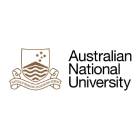Indigenous Collections and Exhibitions
Indigenous Collections and Exhibitions
Primarily taught by Indigenous experts, this micro-credential focuses on theoretical and practical issues relating to Indigenous collections and exhibitions. The micro-credential helps participants develop a critical understanding of the creation, function, histories, politics and contemporary meanings of objects; the representation of cultures in museum displays and other public venues; shifting…
Categories
COURSE DESCRIPTION
Primarily taught by Indigenous experts, this micro-credential focuses on theoretical and practical issues relating to Indigenous collections and exhibitions. The micro-credential helps participants develop a critical understanding of the creation, function, histories, politics and contemporary meanings of objects; the representation of cultures in museum displays and other public venues; shifting relations between source communities and museums and issues of meaning, interpretation, and representation. The emphasis is on collections and exhibitions relating to Aboriginal and Torres Strait Islander peoples that are held or displayed in Australia or overseas, but specific attention is also given to other First Nations cultural heritage removed in colonial contexts, for example from New Zealand, Africa, and the Americas. Issues examined during the course include the history of collecting and exhibitions, community representation, ownership and intellectual property, repatriation, negotiation, preservation, and modes of display.
Topics
- Indigenous Representation in Cultural Institutions – key issues, future directions
- Agency and history
- Powerful objects, emotion, and new directions
- International Examples and change momentum
- Agents of change – repatriation and other influences
- Object case studies
Learning Outcomes
Upon successful completion of this micro-credential, students will have the knowledge and skills to:
- interpret institutional, agency and government policies and frameworks pertaining to Indigenous collections and consultation with Indigenous and other communities;
- conceptualise the main issues pertaining to the representation, preservation, ownership and intellectual property of traditional knowledge and cultural objects, including repatriation;
- evaluate the representation of Indigenous individuals and communities in museums and other exhibition contexts;
- conduct primary research into Indigenous collections including effective written and verbal communication; and
- model best practice and engage in ethical and sensitive processes appropriate to the diversity of constituents and communities in cross-cultural museum contexts.
Indicative Assessment
Pre-reading and 5 key text summaries 300 words each (total 1500 words). Learning outcomes: 1,2,3 (20%)
Participants to undertake a research project developed from critical engagement with an item of Indigenous material culture within a museum context and/or exhibition, producing two items that must be submitted for assessment:
- 10-minute oral presentation of research project identifying key points/issues, plus 5 minutes of discussion and feedback in class. Written copy/pdf from PowerPoint (approx 1,000 words + <10 images). Learning outcomes 1-5) (30%)
- a community or museum report with section (exegesis) that critically reflects on key issues, drawing upon readings and learnings from the course (3000 words). Learning outcomes 1-5 (20%)
Assumed Knowledge
This course is taught at a graduate level. It is expected, but not required, that students will have already taken the micro-credential course: DATA34121 – Repatriation: principles, policy, practice
REQUIREMENTS
This course is taught at a graduate level. It is expected, but not required, that students will have already taken the micro-credential course: DATA34121 – Repatriation: principles, policy, practice.
EDUCATIONAL INSTITUTION
The Australian National University (ANU) is a public research university and member of the Group of Eight, located in Canberra, the capital of Australia. Its main campus in Acton encompasses seven teaching and research colleges, in addition to several national academies and institutes.

